Walgreen’s Drug Store, Raleigh, North Carolina
This week for Flashback Friday we present a ‘natural finish’ real photo postcard of the “Leading Drug Store in North Carolina” — Walgreen Drugs. In this post we also explore the beginning of the civil rights sit-in demonstrations of the early 1960s, and how Raleigh’s Walgreen’s entered the history books.
The Walgreen Camera Dept. mailed this postcard notice to a Mr. Bryan Coston of Spray, N.C.
Sept. 4, 1946
Your camera repair is back now, and can be mailed if you like. Charges total $1.90 or 2.00 by mail.
I wonder if Mr. Coston made the trip all the way from Rockingham County to Raleigh to pick up his camera, or just paid the extra dime to have the USPS deliver it?
Following a major renovation of the Raleigh Building in 1936, management leased the modernized street floor to the national drug store chain. Walgreen’s remained a Fayetteville St. landmark for the next 38 years. It was replaced by Revco Discount Drugs in 1974. A CVS Pharmacy has occupied the spot for about 10 years.
This photo shows the Raleigh Building and its biggest tenant, Walgreen Drugs, in the mid-1940s. The postcard below shows the interior of the “leading drug store in North Carolina.”
A Little Walgreen History
Walgreen Drug Store was founded in Chicago by Charles R. Walgreen in 1901. He pioneered a policy of innovative merchandising including storefront window displays, providing customers with personal service, and selecting goods the customer actually wanted. The innovations proved popular with the buying public and his stores thrived. By 1919 Walgreen operated 20 drugstores in Chicago.
The soda fountain had long been the mainstay of 19th century drugstores. In 1922, Walgreen’s introduced the malted milkshake, adding ice cream to the standard soda-drink formula of milk, chocolate syrup and malt powder. The novelty became an instant success and customers lined up to buy the slushy frozen treat.
It wasn’t long before Walgreen reasoned that soda fountains, which served cold drinks, were not particularly profitable in cold weather. So, ever the innovator, he kicked it up a notch by adding year-round food service — yet another creative marketing idea which proved successful. The public ate it up, so to speak. Sadly, as a result of increasing competition from the plethora of fast food chains which had prevailed in the U.S. from the 1950s onward, Walgreen’s ended its food service in the 1980s.
By 1929 the number of Walgreen retail outlets had grown to more than 500, with locations in New York City, Florida and most urban markets. The drug store chain weathered the Great Depression and emerged as popular, and profitable as ever. Walgreen died in 1939, and his son Charles Jr assumed operations of his father’s empire. Continuing the innovative spirit of its founder, Walgreen’s introduced the ‘self service’ concept after WWII.
Today there are more than 8,000 Walgreen drug stores throughout the country.
Raleigh’s Walgreen Drug Store Becomes a Page in the History Books
A non-violent civil rights movement protesting whites-only food service in drugstores and department stores was initiated by NCA&T students in Greensboro on Feb.1, 1960. Using the tactic of sitting down at a store’s lunch counter, the African-American students were refused service, refused to leave, and thus ‘occupied’ the lunch counter. The students called it a ‘sit down strike,’ but the tactic quickly became popularly known as a ‘sit in.’ Within a week of the Greensboro protest, the sit ins had spread to Winston-Salem, Durham, Fayetteville, Charlotte, and Raleigh.
On Feb. 10 students from Shaw University and St Augustine’s College began sit in protests at seven of Raleigh’s Fayetteville St. stores. They targeted McLellan’s, Woolworth’s, Hudson Belk, Kress, Eckerd’s Drug Store, Cromley’s Sir Walter Drug Store and Walgreen’s, all of which featured whites-only food service.
Protesters demonstrate in the 200 block of Fayetteville St. against whites-only lunch counter service.
The Raleigh sit ins began around 10.30 am. In each store the lunch counters “were immediately closed when the Negro [sic] students asked for service.” “Walgreen’s drug store closed its lunch counter shortly after 11 am. ‘We just shut the fountain [down] in the interest of public safety,’ [the store manager said].” (N&O, Feb. 11 and 12, 1960)
This photo of the student protesters appeared on the front page of the N&O on Feb. 11, 1960. Below, a group of students is confronted by the ‘Closed in the Interest of Public Safety’ placard blocking access to Walgreen’s lunch counter.
McLellan’s closed its entire store at 2 pm, following a scuffle with a free-lance photographer, McLellan’s management and a handful of jeering whites. Walgreens closed its store shortly afterwards when several students occupied the lunch counter. (N&O, Feb. 11 and 12, 1960)
A group of white men block the entrance to Eckerd’s Drug Store on Fayetteville St. during the sit in protests.
In the ensuing months the sit-in protests spread throughout the South. Finally, in July, the national drugstore chains agreed to serve all “properly dressed and well behaved people,†regardless of race. (The Sit-Ins of 1960, Civil Rights Movement Veterans) Ultimately, the Civil Rights Act of 1964 eliminated all segregation laws in the U.S.
Our Flashback Friday ‘real photo’ postcard this week was published by Graycraft Card Co., of Danville, VA.
Graycraft Card Co. (mid-20th century)
Danville, VADanville, Virginia holds an important place in the production of picture postcards in the 20th century. During the 1940s and ’50s Graycraft Card Co. produced black-and-white images of communities all over the South. The company published so many scenes from Southern communities that the cards today provide the core of many view-card collections.
“Flashback Friday†is a weekly feature of Goodnight, Raleigh! in which we showcase vintage postcards depicting our historic capital city. We hope you enjoy this week end treat!

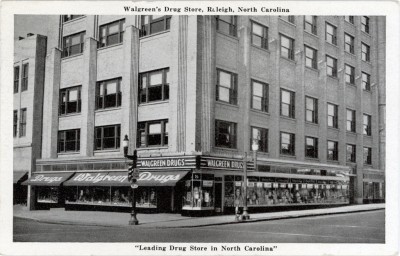
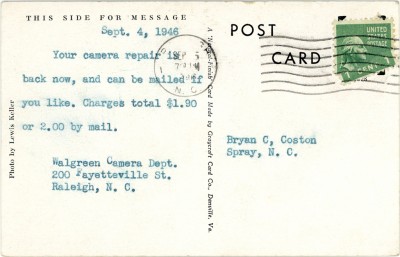
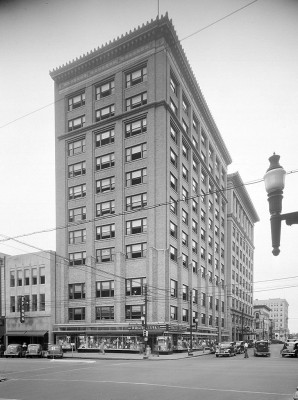
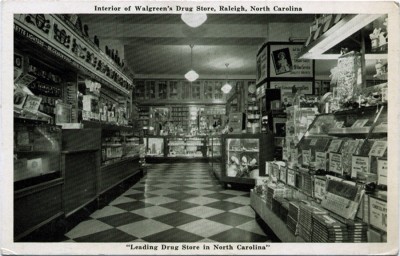
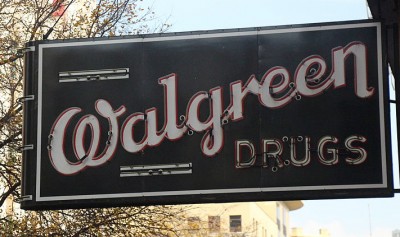
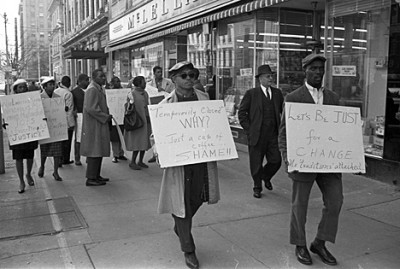
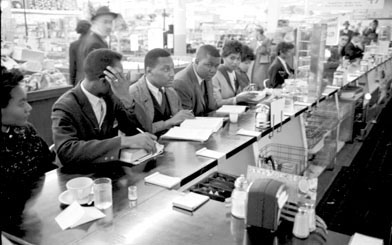

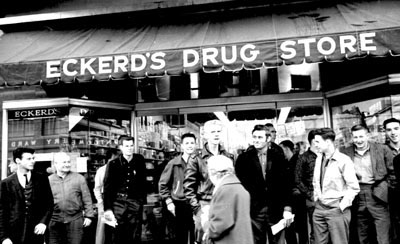
 Sign up for the Newsletter
Sign up for the Newsletter
05/31/2013
A fascinating and multilayered post – thank you, Raleigh Boy.
If anyone is up for a field trip, the International Civil Rights Center & Museum in downtown Greensboro is worth a visit. http://www.sitinmovement.org/visit/civil-rights-museum.asp
05/31/2013
Curt: Glad you enjoyed the post — Thanks for the compliment and thanks for reading Goodnight Raleigh!
And thanks for posting the link to the Civil Rights Museum — I should have included that in the article.
05/31/2013
That store is covered in paneling now. I would be willing to bet that facade is still behind it.
06/01/2013
That Walgreens is where my parents. It was also my granddaddy’s favorite place to hang out. I tagged along with him often.
06/01/2013
That Walgreens is where my parents met…sorry
06/03/2013
When I came to Raleigh in 1950, Walgreens was the place to hang out.You could always find “drugstore Cowboys” in the late afternoon. It really was a cool place to hang out. They sold cigarettes cheaper than most places in Raleigh. I also remember that in the offices above the drug store is where I watched the Raleigh Christmas Parade which was held at night. Ugh, the warmth of that room and not freezing on the street. Boy, was I lucky. Later I moved on down to Eckerd’s Drug which was in the middle of the same block. A little history; before Eckerd’s Drug the building was one of Raleigh’s popular theaters.Thanks for the memories!
06/03/2013
Family always went to Walgreen’s for milkshakes before the movie at the Ambassador. I remember well the efforts to de-segregate the downtown lunch counters. Kids today can’t imagine living in that world. I guess the next generation won’t imagine a world without gay rights, or The Internet.
06/05/2013
Mr. Knowles: Thanks for sharing your memories of Walgreen’s with our readers! I myself also vividly remember the lunch counter.
As to the Christmas Parade — when I was a kid in the ’60s, my Dad would stake out the corner of Hillsboro and Salisbury Streets in front of the Olivia Raney Library with my brothers and me to watch the parade. From that vantage point, Dad would say, we could watch the parade three times — as it proceeded up Hillsboro, when it took the turn at Salisbury right in front of us, and then as it made its way toward Fayetteville St. And, of course, back then the parade was at night.
06/05/2013
Raleigh Boy: You mentioned the Olivia Raney Library, that was a wonderful place. I have one of the official opening booklets of the library when it opened in 1901. I also have the Name plate that was on the side of the library building which told you it was Hillsborough Street. That is the way the street was spelled in early history.
I do not know who publishes “Goodnight Raleigh” but I have a great respect for the memories he/she shares with us. Cheers!
06/06/2013
And didn’t Judge George Greene defend the Shaw students as a young lawyer? Now, that’s a Raleigh person sure to evoke memories……
Also, I’d love to hear more memories about the old Olivia Raney Library. I remember working in the library in the 1970’s when it had moved to the old Kress Dept. store….lots of local color and character….except you did have to dodge the plaster ceiling falling down on your head when in the basement reference room…..and it was always freezing in the winter and hot as blazes in the summer……fun to think about it all….Dale
06/07/2013
I think of Judge Greene nearly every time I come to a stop sign. I was in court one time for speeding and heard him tell a young driver who had been ticketed for running a stop sign to always stop at a stop sign, spell S-T-O-P, and then go; that way he would never get a ticket again. When the defendant said he would do that in the future, Judge Greene dismissed the charges.
06/08/2013
Mr. Knowles: RB is a he. I’ll leave it to him to divulge his name to you-or not, as he wishes.
Thanks for joining the discussion-your input is so valuable. You know things about Raleigh everyone else-those of us who grew up there- have forgotten, or never knew.
12/05/2019
I’m so glad I came across your article! It took weeks to
look for the info you’ve mentioned above and it’s a genuine blessing to find someone
as enthusiastic about this topic as myself.
What I’m attempting to convey is the value of this issue cannot
be hesitated. Individuals who increase it are all worth appreciation despite the fact that I, personally,
don’t fully share your own views. Anyhow, thank you for sharing your own expertise!